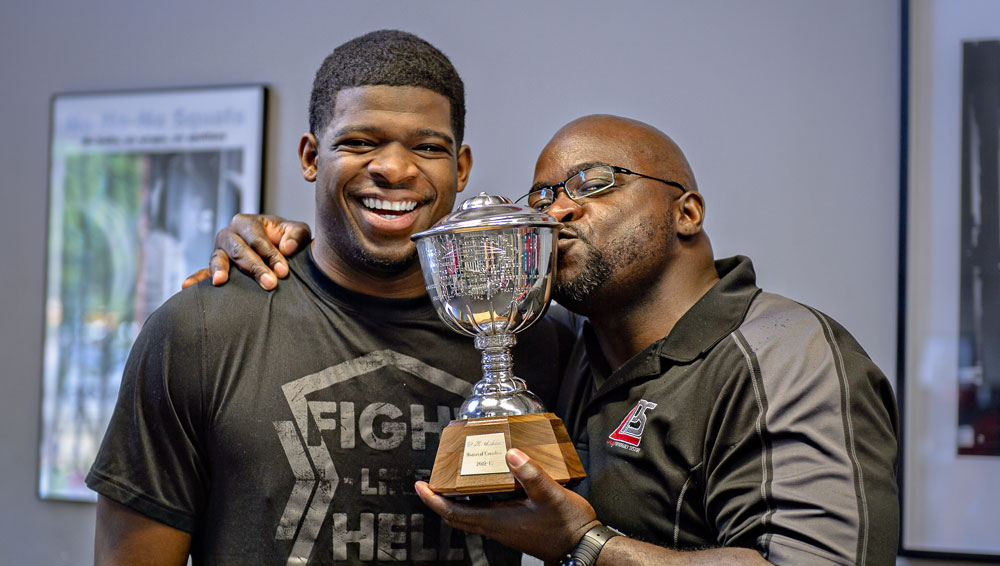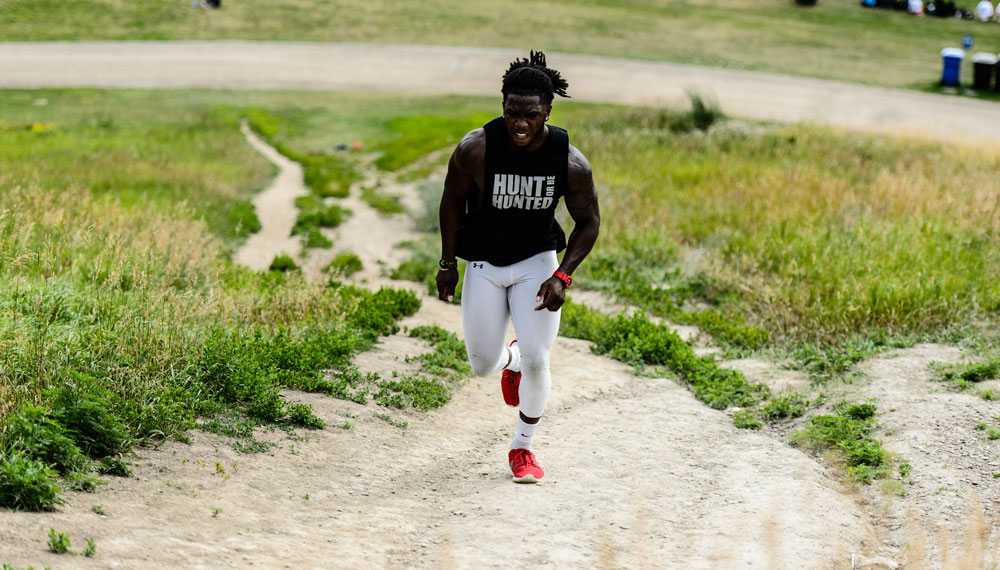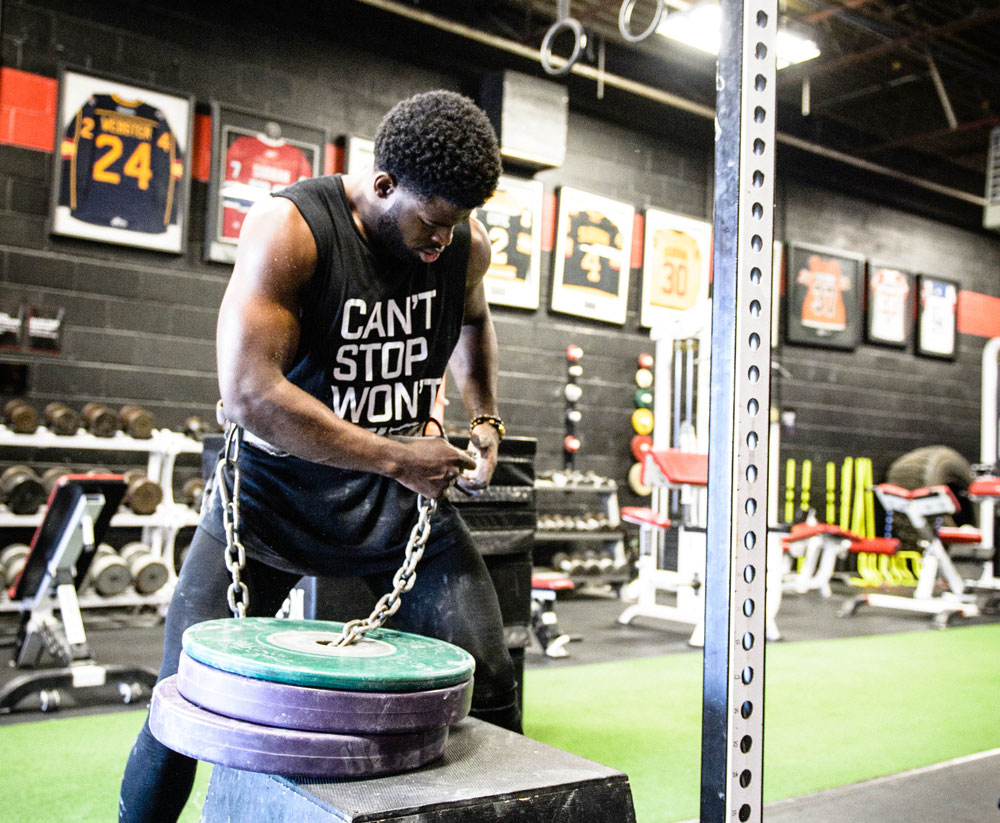The Leading Cause of the Epidemic in Youth Sports Injuries Are Weaker Kids
The Consumer Product Safety Commission (CPSC) research shows that injuries increased 20% in 2021 and now have increased another 12% in 2022.
University of Minnesota Medical School study shows ACL tears in patients ages 6-18 have increased about 2.3 percent each year for the past 20 years, marking a significant upward trend. That means the number of cases (per 100,000) over 20 years, is a 58.3% increase — with girls being a higher case (no coincidence here.)
And almost in all cases, these injuries happen while playing the sport.
How Injuries Happen
I love Dr. Mahmoud Zaerian’s simple formula; Load > Capacity = Injury
When the load (force) exceeds the capacity (strength & mobility) to handle the load in a specific range of motion (mobility and flexibility), it will cause an injury.
The rise in injuries (injury epidemic) directly correlates to the decline in strength, mobility, and neuromuscular connections in children. A review of multiple studies published in the National Institutes of Health (NIH) database concluded that there is an overall trend of decline in various aspects of physical fitness in school-aged children.

One study, published in the Journal of Science and Medicine in Sport, looked at 10-year-olds in Essex, UK, over 16 years. The research found that children in 2014 had about 20% less muscle strength and 30% less endurance compared to those tested in 1998.
Youth athletes today might be spending less time engaged in active play compared to previous generations. Increased screen time, structured activities, and a focus on academics can leave less room for unstructured physical activity. Even when we do have physical activity, safer play areas with softer surfaces and less opportunity for climbing and risk-taking limit the development of strength and motor skills.
Why Strength Matters for Young Athletes
Proper strength training paired with mobility develops stronger bones and muscles, improves balance and coordination, enhances athletic performance like jumping, throwing, etc., reduces the risks of injuries, and more importantly boosts confidence and self-esteem.
When I was 10 years old in the library reading Sports Illustrated magazines, I came across the top running back in the country, Herschell Walker. His neck was bigger than my legs and played on the Georgia Bulldogs football team. In the article, his secret to his overwhelming strength and confidence was push-ups. 1,000- 2,000 push-ups a day from public school to University.
I was blown away. I love Football and wanted to play in the NFL. So I started to copy success. Started with a few push-ups a day, and progressed to 200 a day at the age of 10, until I was able to match Herschell at 2,000 a day. Some in the morning, some during recess, some at lunch, some more at recess, on the way home, at home, and before bed.
Little did I realize, I was doing German Volume Training. By the time I was 19 at 180 lbs, I was benching 425 lbs. This training was the foundation for me breaking many track & field, and Football records.

Young P.K. Subban (NHL All-Star, Norris Trophy Winner) talks about being explosive and strong like Pavel Bure and Jaromír Jágr. Jagr’s father told him if he wanted to be a better hockey player and separate himself, do 1,000 squats a day. When P.K. first came to the gym, he was weak by our standards but stronger than most (and much stronger than the kids we see today).
The key to getting physically more of everything is strength: Strength is the mother of all qualities.
Need more speed? Get strong. Need more power? Get strong. More explosiveness? Get strong.
The right type of strength training allowed P.K. to handle the stresses, forces, and long grind of a season which ultimately led him to break all the rookie fitness testing records, and later secure a $72 million contract, a Norris Trophy, and a gold medal in the Olympics.
“Weak things break. Train like glass, break like glass.”
Fast forward a decade or so, I’m witnessing a crisis in youth athletes in sports. In every sport, Hockey, Baseball, Football, Basketball, and Soccer, young athletes 11 to 14-year-old kids playing at elite levels (AA+) are unable complete basic foundational strength and mobility standards.
Chin-up, a dip, 12 push-ups, squat properly, full mobility on their shoulders and ankles. I can count on two hands the number of kids in the last 5 years (over 100+ kids) that can do more than 3 chin-ups, or even be able to do a proper full bodyweight squat.
This blew my mind.
My 9-year-old son tells me they are not allowed to have snowball fights at school. In surveying young kids on what their gym class is like, 100% of the kids said they just either free play or an organized game — no physical preparation.
The standard of physical fitness is almost non-existent.
Why Parents Must Guide Strength Training Decisions
Youth athletes are still growing, and their bodies have different needs compared to adults. Improper training can lead to injuries because children may not be aware of proper form and technique, increasing the risk of muscle strain or overuse injuries.
Do you want fun or results for your kid(s)?
As parents, we must stop worrying whether or not our kids enjoy it in the short term, and prioritize long-term results by helping them make the connection that their success is the result of the hard and boring work they’ve put in. It’s like asking if a child likes eating vegetables, and just because they say ‘No.’, we should immediately stop feeding them vegetables. More often than not, kids are not educated enough to make these proper decisions.
Karl Subban (P.K.’s father) would come home late from work and take P.K. out on the ice. One day, P.K. asked his father, “Dad, why do we have to go skating so late?”.
Karl responded, “Somewhere in Russia, there is a kid training right now, and one day you will face that kid, and if you don’t train he will beat you!”
Karl’s success was because he didn’t compare against what P.K.’s teammates were doing, nor did he care to blindly listen to the coaches. He researched and kept his pulse on the best kids in the world, not just in Canada, and he kept that in focus for P.K. until P.K. owned that responsibility.
Karl would drop off P.K., and his brothers to our gym. He didn’t care if they didn’t like the training, he knew that getting strong was vital to their career path. Karl would just wait outside patiently. For years, P.K. took no vacation, no cottage trips, trained up to 5x a week, shot 300+ pucks in between gym training and never put food in his mouth that I didn’t approve of.
When the results separated P.K. from the pack, eventually Karl stopped driving P.K. to the gym. Instead, P.K. took ownership and responsibility taking the TTC to our gym once, sometimes twice a day.
When you provide your child with proper foundations, the results will become fun.
Strength Training Activities for Young Athletes
Strength is the foundation for everything — speed, quickness, power, explosivity, mobility, and durability.
As a benchmark, these are the minimum daily baseline requirements any young athlete must be able to do (male and female) by the age of 12, all at the full range of motion.
- 12 chin ups
- 50 push-ups
- 12 dips
- 50 Full squats of their body weight
We emphasize full range of motion because being strong in the full range of motion allows them to acquire the capacity (strength and mobility) to handle the load (forces) that are dealt with in sports.

Look, you don’t need to spend money on a strength professional to do push-ups, chin-ups, squats, or run hills. Would it help? Sure, but Karl Subban had P.K. running hills in Etobicoke Centennial Park 2-3x a week before sending him to our gym.
These are the foundations, and just start even if it’s just 1 rep.
With young kids, use variations to help them build that foundation. If they can’t do a proper push-up from the ground, use an incline so it’s easier. If they can’t do a chin-up, do bodyweight eccentric chin-ups. With time and consistency, they will achieve those base standards that we’ve set above.
Along with these foundational strength training, young athletes must be running, jumping, and throwing. That means putting them in opportunities to build their mobility, flexibility, and athleticism.
These are the basics.
As they get older, and they want to separate themselves from the competitors, that’s when leveraging higher loads (ie. weights) will be the key to that result. When that happens, we recommend enlisting a qualified professional coach to program, and coach for your kid.

When P.K. had the 2nd hardest and fastest slap shot in the league, he strapped 160 lbs on top of his body weight of 210 lbs for his chin-ups, squatted 420 lbs, power cleaned 265 lbs and bench pressed 340 lbs as a defenceman for the Montreal Canadiens.
Whether you want to have the hardest slap shot, fastest bat speed, golf club head speed, or throwing velocity, one must start with a solid foundation first.
Don’t Let Your Kids Make You Soft
In my experience training elite athletes, I’ve encountered situations where mental fortitude can be a challenge. One such instance involved a highly skilled Ontario Hockey League (OHL) prospect who faced occasional parental overprotection. During a scheduled training session, he was absent due to reported soreness and fatigue. While his parents might have anticipated leniency, I emphasized the importance of immediate attendance.
Muscle soreness and fatigue are normal during adaptation. It’s crucial to maintain training consistency, even with minor discomfort. We implement strategies to work around these temporary setbacks and ensure uninterrupted progress. Stopping entirely disrupts the development process. Interestingly, upon returning to training, the athlete achieved several personal bests, highlighting the importance of perseverance.
Our minds can be deceptive. The body naturally resists change and attempts to maintain its current state. It prioritizes comfort and homeostasis.
We must develop mental resilience in our kids (athletes).
We emphasize that discomfort is an indicator of growth, not a reason to halt progress. Comfort breeds stagnation, not improvement. We often create justifications like “load management” or “recovery” when, in reality, most athletes haven’t earned such extended breaks.
You Have to See the Vision for Your Children Before They can See it Themselves
Parental guidance plays a crucial role in shaping a child’s long-term development. While a child may not always enjoy every activity, a parent’s informed decisions can expose them to valuable experiences that contribute to their growth and future success.
Karl Subban’s relentless commitment to the vision for his kids’ success who all have made it to the NHL is just one of many examples of how parents take control and make hard decisions that may have their kids disliking them for a brief moment in history for the gratefulness & thankfulness they will have when they are wiser.
Leave A Comment